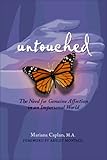
With the rise of industrialism and the transcontinental railroad in the United States, it became necessary to establish time zones . They were introduced in 1883 and codified into law in 1918. This enabled commerce to be shipped and tracked in a timely manner. People, once used to directing their gaze to the sky or to the trusty town clock, now had time streamlined with others in their nation. While this is helpful for accountability, as well as scientific measurement, it also creates a schism between an individual and their personal relationship to time.
There are numerous ways to perceive time. What is time, anyway? It is the measurement of the movement of objects (or the procession of events) through space. Historically, however, time was important to people as a tool for understanding the duration of the day and seasons. Native Americans (and many “primitive” cultures) named the months after foods that were available during that time. Their survival depended on their intimate connection with the cycle of the seasons.
When standard time zones were made into law, Daylight Savings Time was also written in. This addition manipulated the standard time so that during the equinoxes daylight would be conserved by one hour. However, people were not ready for it, and it was repealed. The idea was toyed with until 1966, when it was written into law again with the possibility of exemption. Among the states today, Hawaii and most of Arizona claim exemption. Why was Daylight Savings Time so important? We already had standardized time to create accountability. However, the seasons still progressed as they do and became a hindrance after the autumn equinox, when the tilt of the Earth angles North America away from the sun, and hence, away from the light. Our current law stipulates that at 2 a.m. on the first Sunday in November we “fall back” or set our clocks back on hour, and on the first Sunday in March we “spring forward” or set our clocks forward one hour. What would be the benefit of this? Perhaps if we get up earlier, we will work more? This further manipulation of time is also beneficial to economic ends. It feels somewhat like a ball and chain.
When I worked an 8-5 job, Daylight Savings Time always took some adjustment of my circadian rhythms. It always felt like jet lag. I’ll have to admit that, in the last three years I’ve been homeschooling, I haven’t really been affected by it. For some reason, this year I have felt the pull of the season more acutely. It’s getting dark a couple hours earlier than it was during the summer. Consequently, I want to go to bed a couple hours earlier. This confounds my family, who knows that my "normal" bedtime is at 10. It is a little disconcerting. Bedtime at 8?! This might seem like a handicap when I normally see time as so limited anyway. But I’ve chosen to establish a different relationship with time. When my body is tired, I go to bed. Fortunately I have been afforded the opportunity to homeschool. The ball and chain is gone and so my belief that time needs to be saved.
The question remains: How can we honor our circadian rhythms—our relationship to the light? As time seems to be so inextricably linked with the economy, how can we work within the constraints of our modern world? Of capitalism? In what ways can we re-imagine it? This last question normally leads people to think about socialism, but that’s not what I’m talking about. I’m talking about creating a new paradigm. These questions are so amazingly complex, that it’s difficult to know where to begin. Respectful dialog is always a positive step, though.
Another step may be to start at the beginning, to re-establish our relationship with the processes of our Earth and its relationship with the Sun. To work with our rhythms instead of against them. To get to know the growing cycle of our food. To work with the light instead of against it.
“It used to be that inner and outer light were one. When it became dark, a candle was lit. People sat around the light; it was a precious thing. And something enlightening always radiated from it. Today light can be had without effort by pressing a button. We can take light for granted; an unconscious and loveless relationship arises,” Manfred Schmidt-Bryabant says in The Spiritual Tasks of the Homemaker. “We cannot do without electricity any more. But we must create a way of compensating inwardly for what has been lost through external aids.”
Future Reading (any other suggestions?):
Finding Our Way: Leadership for an Uncertain Time by Margaret Wheatley
The Post-Corporate World: Life After Capitalism by David Korten
Capitalism at the Crossroads: Aligning Business, Earth, and Humanity by Stuart Hart
























